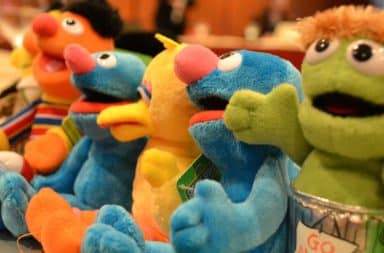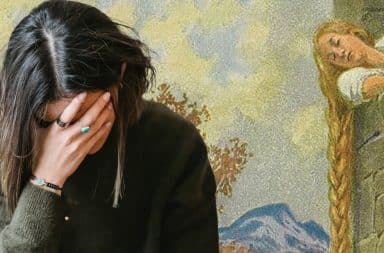I teach drama to high school students in Bhutan, which is this tiny country that most Americans can’t find on the map. (It’s in the Himalayas.) They didn’t get television until 1999, and all their channels come from India, so they have a pretty unique perspective on pop culture. I guess that explains why everyone here loves the 2005 Jamie Kennedy film Son of the Mask.
Do you remember Son of the Mask? I sure didn’t. It was the much-delayed sequel to the 1994 Jim Carrey film, and it had Alan Cummings as Loki, the god of mischief, and most of the movie was about a green-faced, computer animated baby who trashes his house and giggles at the camera. It’s weird.
Last week, we started planning our big drama performance, and I asked all my students which story we should do. In other countries where I taught, students usually chose fairy tales or superhero stories or whatever—but the kids in Bhutan unanimously voted for Son of the Mask.
I promised that we would perform whichever story they chose, but now I’m facing a huge dilemma. How can I adapt Son of the Mask into a 10-minute play with a bunch of 13-year-olds who speak limited English?
First of all, we can’t exactly recreate any of the special effects. I mean, half the film relies on early-2000's computer graphics to show a baby acting like a cartoon character. I’m not sure if you’ve seen the movie (probably not), but there’s a scene where Jamie Kennedy seduces his wife and conceives a magical baby with all the powers of the Mask. How can I do that with 13-year-old Bhutanese children?
Secondly, the movie has three main characters. Well, five if you count Loki and the long-absent wife (played by the assistant from Monk). Most of the screen time, though, goes to Jamie Kennedy, a baby, and a dog. I need to give speaking roles to twelve students (nine girls and three boys), and I have no idea how to do that.
The easy solution (what most school drama teachers would do) is turn all the weaker actors into “narrators.” That way, we can have our five characters, and then a long line of students standing off to the side explaining things like, “Not long after, the baby bounces off the window and makes ambulance noises with its mouth.”
I don’t want to do that, though. I’m not a hack.
The third big problem is that our school is forcing me to keep the actors in their national dress. We can have as many props as possible (a green paper mask seems pretty easy to make), but the costumes must all go over their traditional ghos and kiras. A gho (for boys) is sort of like an Asian kilt with a giant pocket in the front. A kira (for girls) is a brightly-colored dress that goes down to their ankles.
Now, picture a student wearing these formal clothes, except with a baby costume somehow pulled over it. Or a dog costume. Or a Jamie Kennedy costume. No words.
I have a lot of experience directing school performances, but I’ve never felt more overwhelmed. We have two weeks to scrape something together before we have to perform in front of all the local parents, as well as a group of visiting monks who presumably have no idea what Son of the Mask is.
Thankfully, I asked all my actors to pick another story to perform, just in case this one doesn’t work out. Their choice? 1994’s Baby’s Day Out.


